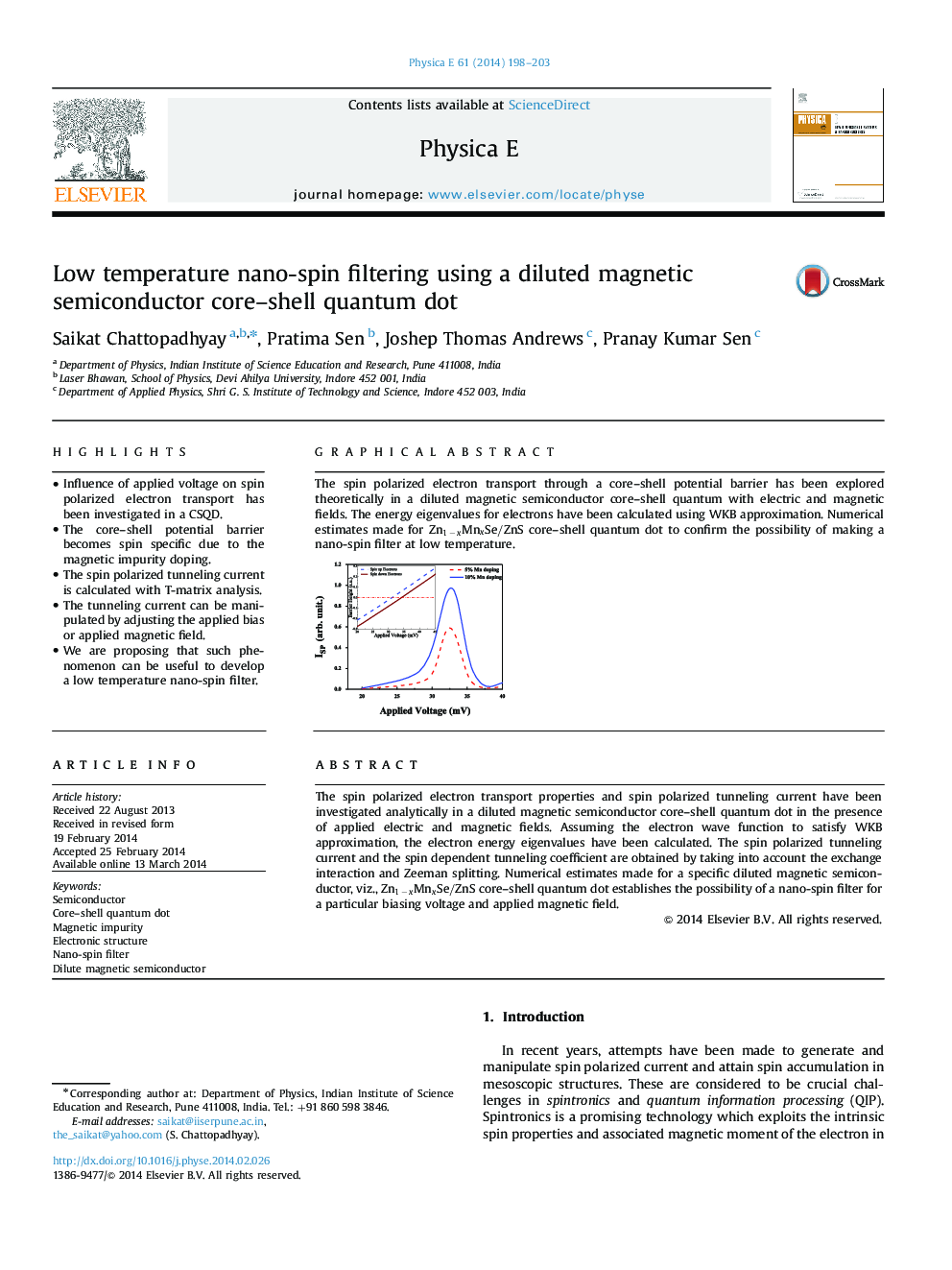| Article ID | Journal | Published Year | Pages | File Type |
|---|---|---|---|---|
| 1544418 | Physica E: Low-dimensional Systems and Nanostructures | 2014 | 6 Pages |
•Influence of applied voltage on spin polarized electron transport has been investigated in a CSQD.•The core–shell potential barrier becomes spin specific due to the magnetic impurity doping.•The spin polarized tunneling current is calculated with T-matrix analysis.•The tunneling current can be manipulated by adjusting the applied bias or applied magnetic field.•We are proposing that such phenomenon can be useful to develop a low temperature nano-spin filter.
The spin polarized electron transport properties and spin polarized tunneling current have been investigated analytically in a diluted magnetic semiconductor core–shell quantum dot in the presence of applied electric and magnetic fields. Assuming the electron wave function to satisfy WKB approximation, the electron energy eigenvalues have been calculated. The spin polarized tunneling current and the spin dependent tunneling coefficient are obtained by taking into account the exchange interaction and Zeeman splitting. Numerical estimates made for a specific diluted magnetic semiconductor, viz., Zn1−xMnxSe/ZnSZn1−xMnxSe/ZnS core–shell quantum dot establishes the possibility of a nano-spin filter for a particular biasing voltage and applied magnetic field.
Graphical abstractThe spin polarized electron transport through a core–shell potential barrier has been explored theoretically in a diluted magnetic semiconductor core–shell quantum with electric and magnetic fields. The energy eigenvalues for electrons have been calculated using WKB approximation. Numerical estimates made for Zn1−xMnxSe/ZnSZn1−xMnxSe/ZnS core–shell quantum dot to confirm the possibility of making a nano-spin filter at low temperature.Figure optionsDownload full-size imageDownload as PowerPoint slide
